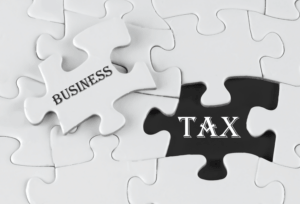
Whether you’re a business owner monitoring quarterly costs or an individual tracking monthly expenses, this calculator simplifies the process of calculating total costs for a specified period. It stands as a versatile resource for financial management and planning, ensuring individuals and businesses can achieve their financial goals. The product costs are sometime named as inventoriable costs because they are initially assigned to inventory and expensed only when the inventory is sold and revenue flows into the business. When setting prices for products or services, businesses must ensure that all costs, Law Firm Accounts Receivable Management including period costs, are covered to maintain profitability.
How to Calculate the Payback Period for Solar in California
Some examples how to calculate period costs include General administration costs, sales clerk salary, depreciation of office facilities, etc. Both of these costs are considered period costs because selling and administrative expenses are used up over the same period in which they originate. Examples of product costs include the cost of raw materials used, depreciation on plant, expired insurance on plant, production supervisor salaries, manufacturing supplies used, and plant maintenance. Now let’s look at a hypothetical example of costs incurred by a company and see if such costs are period costs or product costs. However, managing Period Costs effectively indirectly impacts the balance sheet by influencing cash flow, liquidity, and profitability.

“Period Costs” In Accounting Takeaways
- Identifying and categorizing these costs is important as different purposes require different cost constructs.
- Each step brings you closer to understanding how long it will take for your investment to pay off.
- By controlling Period Costs and optimizing spending, businesses can improve their bottom line profitability, increase cash reserves, and enhance overall financial stability.
- Understanding these types of period costs is important for managers as they plan and evaluate the company’s activities and performance.
- It will keep accruing, and an entity will have to bear the same without profit or revenue.
Management accountants must frequently scrutinize a company’s expenses to determine which are period costs and which are production costs before adding them to the income statement. Once they’re on the income statement, the accountant can deduct them from the gross profit to calculate the period’s net income. The tax implications of period costs are an intricate aspect of fiscal management that can influence a company’s tax liability. Since period costs are deductible in the year they are incurred, they can reduce taxable income, thereby affecting the amount of tax owed by the business. It is essential for companies to accurately categorize and document these expenses to ensure they are maximizing their tax deductions. For instance, a business may be able to deduct the full amount of certain administrative expenses, such as office supplies or non-depreciable equipment, in the year they are purchased.
Period Costs (Definition And Examples: All You Need To Know)

Administrative costs pertain to the general management of the business and include executive salaries, legal fees, and other overhead not related to production. Understanding these types of period costs is important for managers as they plan and evaluate the company’s activities and performance. Period costs are also known as period expenses, time costs, capacity costs, and operating expenses. In order to keep your budget efficient, it is important to know how to report period costs, but unfortunately, there is no standard formula for calculating period costs.
How confident are you in your long term financial plan?
Most of the components of a manufactured item will be raw materials that, when received, are recorded as inventory on the balance sheet. Only when they are used to produce and sell goods are they moved to cost of goods sold, which is located on the income statement. When the product is manufactured and then sold a corresponding amount from the inventory account will be moved to the income statement. So if you sell a widget for $20 that had $10 worth of raw materials, you would record the sale as a credit (increasing) to sales and a debit (increasing) either cash or accounts receivable. The $10 direct materials would be a debit to cost of goods sold (increasing) and a credit income summary to inventory (decreasing).

Difference Between Product Costs and Period Costs FAQs
According to generally accepted accounting principles (GAAPs), all selling and administrative costs are treated as period costs. Product costs are all the costs that are related to producing a good or service. These items are directly traceable or assignable to the product being manufactured. Product costs only become an expense when they are sold and become period costss. The Total Period Cost Calculator is a valuable tool for assessing financial performance and managing expenses effectively.
These costs should be monitored closely so managers can find ways to reduce the amount paid when possible. At $0.29 per kWh (and climbing), California’s average electricity rate is 4th highest nationwide. For example, a 10kWh battery could yield rebates from $2,000 to $10,000, slashing upfront costs dramatically. In this example, the calculated total operating cost for the second quarter is $22,300. Save time and effort with our easy-to-use templates, built by industry leaders.
Leave a Reply